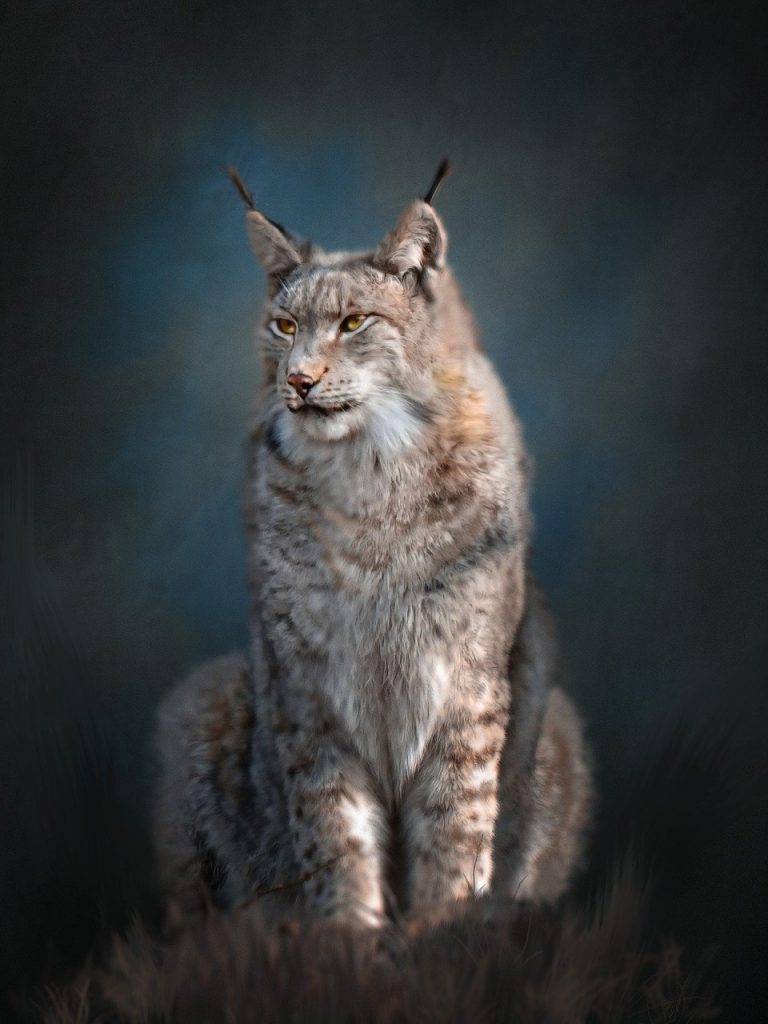Lynx (Cat, Great)

This long-haired cat has tufts of black hair growing form the tips of its ears.
The lynx is a member of the great cat family and makes its home in the colder regions of the world, most often in rocky areas above the tree line. Lynxes are generally solitary creatures and are excellent climbers.
The lynx, like other big cats, is territorial and a solitary hunter. Most of its hunting is done during the daylight hours, though some species of lynx hunts only at night. Its diet generally consists of small animals such as rodents, birds, fish, and rabbits. During the winter months its diet includes larger prey such as elk or deer. Prey that is killed is partially eaten and the remaining carcass is buried in thick underbrush or snow. The lynx returns over a period of 1d6 days to finish its meal.
Lynxes are generally solitary creatures, but occasionally a den is discovered that contains a male, female and 1d6 cubs. Cubs are generally ineffective and non-threatening in combat. Cubs are sometimes captured and sold on the market where they can be trained and raised.
A lynx has thick, gray fur that is spotted, striped, or plain. During the winter months through the summer months, its coat varies from spotted to plain. Its short tail is ringed and tipped with black fur. Its pointed ears are tipped with tufts of long black hairs and its eyes range from green to gray to brown. Its paws are large and covered with thick fur. This helps the lynx distribute its weight when moving across snowy terrain. The average lynx is 2 1/2 feet to 4 feet long and weighs 20–40 pounds.
Lynxes stalk their prey and prefer to strike from ambush. They primarily use their bite attack in combat, only relying on their claws if they must. A lynx goes for the “kill shot” at first opportunity against its quarry, attempting to sink its teeth into its opponent’s throat.
Lynx CR 2
XP 600
N Small animal
Init +2; Senses low-light vision, scent; Perception +9
DEFENSE
AC 14, touch 13, flat-footed 12 (+2 Dex, +1 natural, +1 size)
hp 13 (2d8+4)
Fort +5, Ref +5, Will +1
OFFENSE
Speed 40 ft., climb 20 ft.
Melee 2 claw +4 (1d3+2 plus grab), bite +4 (1d4+2)
Special Attacks pounce, rake (2 claws +4, 1d3+2)
STATISTICS
Str 15, Dex 15, Con 15, Int 2, Wis 12, Cha 6
Base Atk +1; CMB +2 (+6 grapple); CMD 14 (18 vs. trip)
Feats Skill Focus (Perception)
Skills Acrobatics +10, Climb +10, Perception +9, Stealth +10 (+14 in heavy undergrowth or tall grass); Racial Modifiers +8 Acrobatics, +4 Stealth (+8 in heavy undergrowth or tall grass)
ECOLOGY
Environment cold forests, hills, mountains and plains
Organization solitary, pair or den (1–2 adults plus 1–6 cubs)
Treasure none
Caracal
The caracal is a small cat, very similar to the lynx, and is commonly referred to as the desert lynx (even though it doesn’t live in desert regions). The caracal uses the statistics for the lynx, but is found in warm or temperate plains and hills and does not have the snow move ability of the standard lynx.
Section 15: Copyright Notice
Lynx from the Tome of Horrors Complete, Copyright 2011, Necromancer Games, Inc., published and distributed by Frog God Games; Author Scott Greene.

 Buy me a coffee
Buy me a coffee